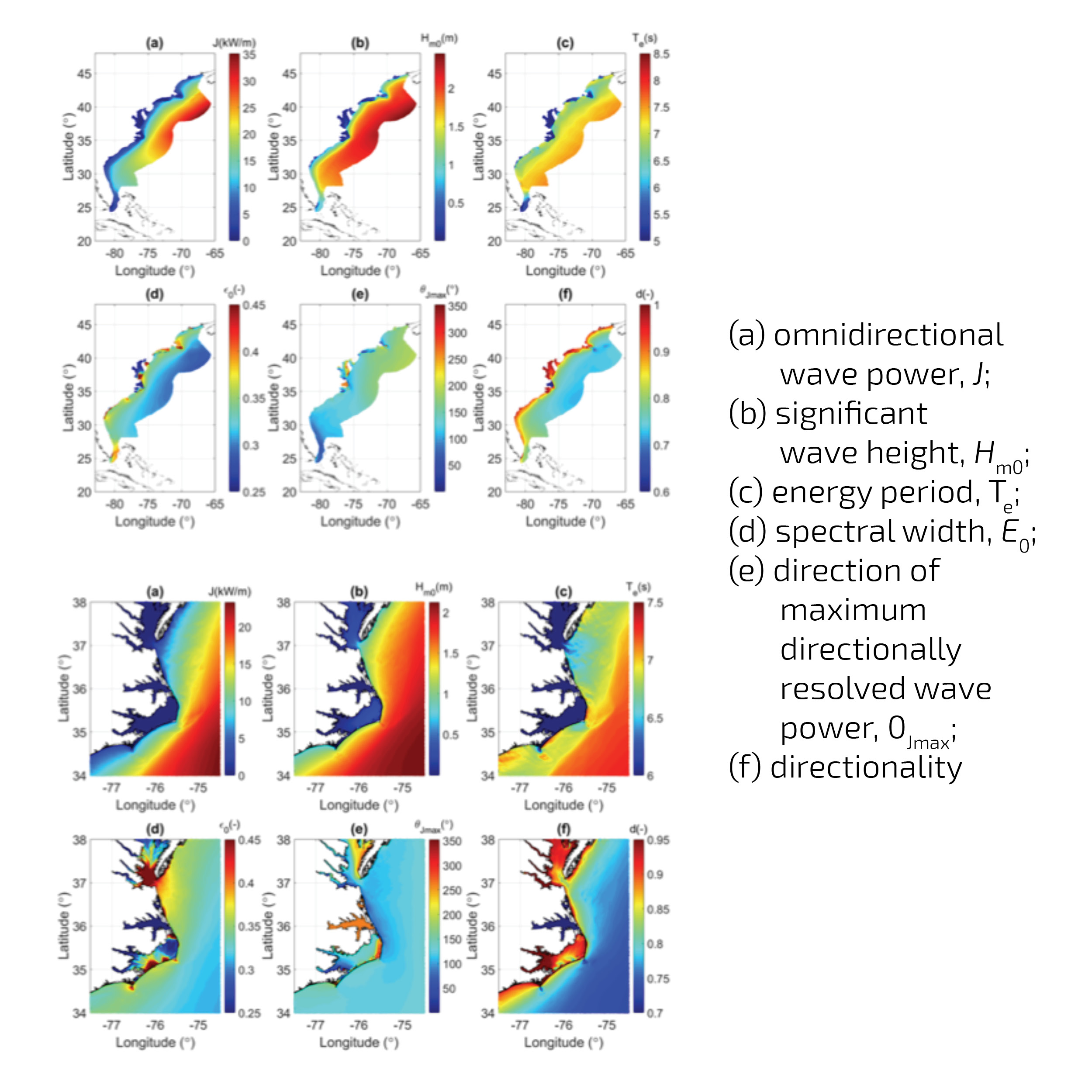High Performance Computing at Sandia plays a key role in the DOE Water Power Technology Office’s mission of advancing the commercialization of wave energy by generating an assortment of geospatial statistics on wave energy resources in the U.S. at an unprecedented level of spatial and temporal resolution. This was recently highlighted in a collaborative project between Sandia’s water-power technologies department and North Carolina State University (NCSU).
Ocean wave energy is renewable, has a high energy density, is close to high coastal population centers around the globe, and has limited environmental impacts. In the U.S., wave energy resources make up approximately 80% of the ocean hydrokinetic energy resources (wave, ocean currents, and tidal currents). A wide spectrum of wave energy conversion (WEC) technologies designed to capture, absorb, and convert the energy transferred by ocean waves to electricity, or some other useful form of energy, are under development, but the costs of these technologies are high and industry is still in its pre-commercial phase. Sandia is one of DOE’s main national laboratories conducting foundational research since the conception of the Water Power R&D program to improve the techno-economic performance of these technologies, leveraging decades of experience in water power technology engineering, controls and materials research, large-scale testing, and HPC.

Wave energy resource characterization and assessment is a key thrust area of the DOE’s Water Power R&D program strategy to advance the wave energy industry by providing high-resolution data and information on wave energy resource attributes and wave conditions that inform WEC design, and that characterize opportunities, constraints, and risks to wave energy projects. These data and information support project siting, permitting, and development.
The Sandia-NCSU team applied the Simulating WAves Nearshore (SWAN) model to simulate a 32-year wave hindcast along the U.S. East Coast, which encompassed the entire economic exclusion zone (EEZ) 200 nautical miles offshore with a computational mesh of over 4.3 million grid points. The model generates time series for a variety of wave energy resource statistics, including wave power at a 200 m resolution up to 20 km off the coastline. These statistics are invaluable for characterizing, classifying, and assessing the U.S. wave energy resources, including wave energy project opportunities, constraints, and risks. The model was extensively verified and validated, and efforts are now underway to generate a 32-year hindcast for the Gulf of Mexico and Caribbean Sea with a computational mesh of over 5.7 million grid points.
This study demonstrates the value of Sandia’s HPC resources for generating modeled data at high spatial and temporal resolutions. The size of the modeled dataset for the U.S. East Coast is over sixty terabytes, and for the Gulf of Mexico and Caribbean Sea it’s expected to be over one hundred terabytes. Wave energy resource statistics generated from this data set will be used to upgrade the marine and hydrokinetic (MHK) ATLAS maintained by the National Renewable Energy Laboratory, which provides valuable information to designers of WEC technologies, WEC project developers, and regional energy planners. In addition, the full model hindcast dataset, which includes 32-year 3-hour time series of these resource statistics and over one hundred virtual buoy sites with hourly 2D wave spectra, will be disseminated as an open source database on an Amazon Web Server to promote further research characterizing and assessing the U.S. wave energy resource.

Simulated 32-year averages of six wave energy resource statistics in the Chesapeake Region of the U.S. East Coast. (bottom two rows)